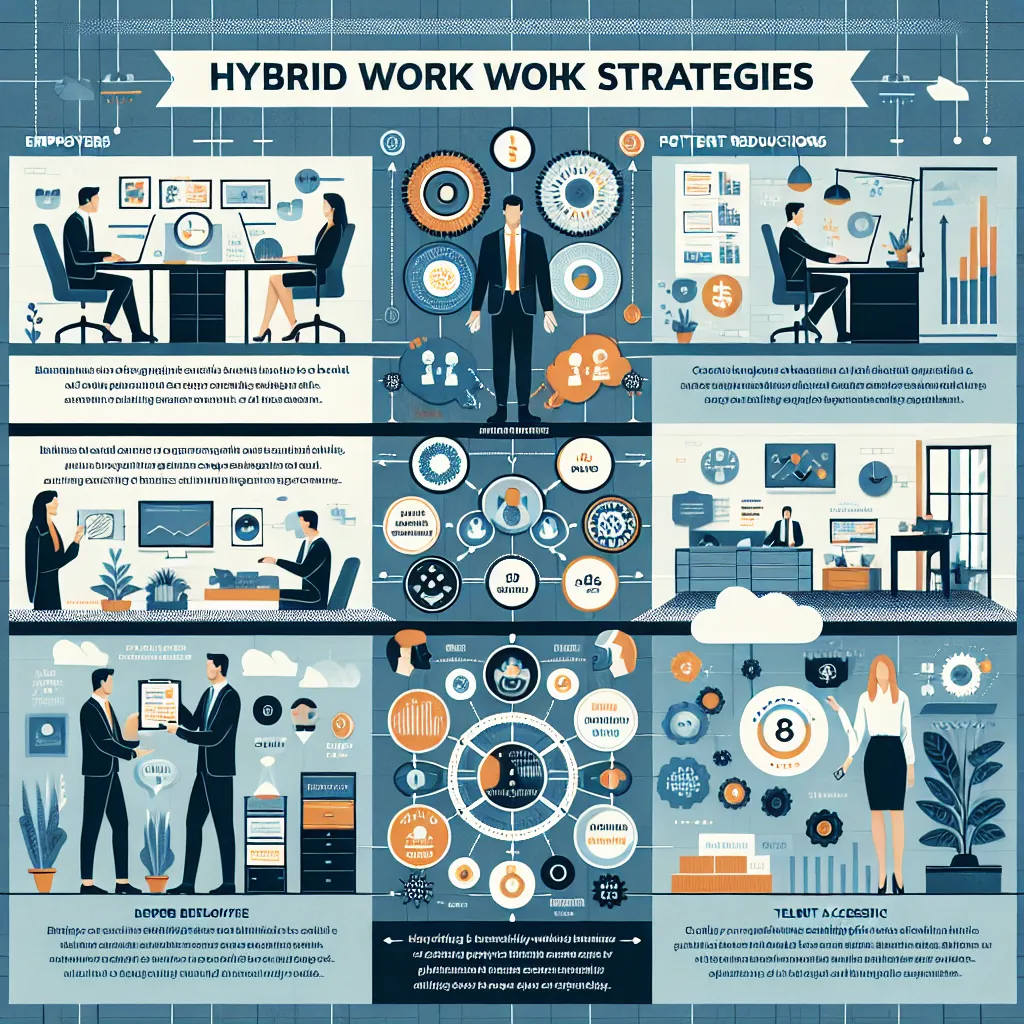The topic of hybrid work models has gained significant attention in recent years, particularly due to the global shift in work practices during and after the COVID-19 pandemic. As an IELTS Writing Task 2 examiner, I’ve observed an increasing trend in questions related to remote work, flexible schedules, and the changing nature of the workplace. While this specific topic hasn’t been a frequent feature in past IELTS exams, its relevance in today’s world makes it a strong candidate for future tests. Let’s explore a potential IELTS Writing Task 2 question on this subject and analyze how to approach it effectively.
Nội dung bài viết
Analyzing the Task 2 Question
Some people believe that the rise of hybrid work models, combining remote and office work, has more advantages than disadvantages for both employees and employers. To what extent do you agree or disagree with this statement?
This question falls under the “agree or disagree” category of IELTS Writing Task 2. It requires you to present your opinion on whether hybrid work models offer more benefits than drawbacks for both workers and companies. To tackle this question effectively, you need to:
- Clearly state your position
- Provide well-developed reasons and examples to support your view
- Consider potential counterarguments
- Conclude by reinforcing your stance
Let’s look at two sample essays addressing this question, one aiming for a Band 7-8 score and another for a Band 6-7 score.
Sample Essay 1 (Band 7-8)
In recent years, the concept of hybrid work models, which blend remote and in-office work, has gained significant traction. I strongly agree that this approach offers more advantages than disadvantages for both employees and employers. This essay will explore the benefits of hybrid work arrangements and address potential concerns.
One of the primary advantages of hybrid work models for employees is the improved work-life balance. By allowing workers to split their time between home and office, companies enable their staff to better manage personal responsibilities while maintaining professional productivity. For instance, parents can be more present for their children’s activities without sacrificing work quality. This flexibility often leads to increased job satisfaction and reduced stress levels, which in turn can enhance overall performance and loyalty to the company.
From an employer’s perspective, hybrid work models can result in significant cost savings and access to a broader talent pool. By reducing the need for large office spaces and associated overheads, companies can allocate resources more efficiently. Moreover, the ability to hire talent regardless of geographical constraints allows businesses to tap into a diverse and skilled workforce that may have been previously inaccessible. This can lead to increased innovation and competitiveness in the global market.
However, it is important to acknowledge potential drawbacks, such as the challenge of maintaining team cohesion and company culture in a dispersed work environment. Nevertheless, these issues can be mitigated through thoughtful implementation of communication technologies and regular in-person team-building activities. The benefits of increased productivity, employee satisfaction, and cost efficiency outweigh these manageable challenges.
In conclusion, the advantages of hybrid work models for both employees and employers are substantial and far-reaching. While there may be some hurdles to overcome, the potential for improved work-life balance, increased productivity, and cost savings make this approach a net positive for the modern workplace. As such, I firmly believe that the benefits of hybrid work arrangements significantly outweigh any potential disadvantages.
(Word count: 309)
 Hybrid Work Model Benefits
Hybrid Work Model Benefits
Sample Essay 2 (Band 6-7)
In today’s world, many companies are using hybrid work models that mix working from home and in the office. I agree that this way of working has more good points than bad ones for workers and bosses. In this essay, I will explain why I think this.
Firstly, hybrid work is good for employees because it gives them more freedom. They can choose when to work from home and when to go to the office. This helps them balance their work and personal life better. For example, they can avoid long commutes some days and spend more time with family. This makes workers happier and less stressed.
For employers, hybrid work can save money. They don’t need big offices anymore because not everyone comes in every day. This means they can spend less on rent and office supplies. Also, companies can hire people from anywhere, not just near the office. This gives them more choices to find good workers.
However, there are some problems with hybrid work. It can be hard for teams to work together when they’re not always in the same place. Also, some people might feel lonely working from home a lot. But I think these problems are not as big as the benefits.
In conclusion, I believe hybrid work has more advantages than disadvantages. It helps workers have a better life-work balance and helps companies save money and find good employees. While there are some challenges, the good things about hybrid work are more important.
(Word count: 249)
Key Points to Consider When Writing
When addressing topics related to hybrid work models in IELTS Writing Task 2, keep the following points in mind:
-
Structure: Ensure your essay has a clear introduction, body paragraphs, and conclusion. Each body paragraph should focus on a single main idea.
-
Language: Use a range of vocabulary related to work and employment. For Band 7-8, incorporate more sophisticated language and complex sentence structures. For Band 6-7, focus on clear, correct language with some variety.
-
Examples: Provide specific, relevant examples to support your points. This demonstrates your ability to apply ideas to real-world situations.
-
Balance: Consider both sides of the argument, even if you strongly agree or disagree with the statement.
-
Coherence: Use appropriate linking words and phrases to connect your ideas smoothly.
Vocabulary to Remember
Here are some useful vocabulary items related to hybrid work models:
- Flexibility (noun) /ˌfleksəˈbɪləti/ – the ability to change or be changed easily according to the situation
- Work-life balance (noun) /ˌwɜːk laɪf ˈbæləns/ – the division of one’s time and focus between working and family or leisure activities
- Productivity (noun) /ˌprɒdʌkˈtɪvəti/ – the effectiveness of productive effort, especially in industry, as measured in terms of the rate of output per unit of input
- Remote work (noun) /rɪˈməʊt wɜːk/ – work done away from a central workplace, especially at home
- Overhead costs (noun) /ˈəʊvəhed kɒsts/ – ongoing business expenses not directly attributed to creating a product or service
- Team cohesion (noun) /tiːm kəʊˈhiːʒən/ – the extent to which team members stick together and remain united in the pursuit of a common goal
- Implementation (noun) /ˌɪmplɪmenˈteɪʃən/ – the process of putting a decision or plan into effect
- Dispersed (adjective) /dɪˈspɜːst/ – distributed or spread over a wide area
- Mitigate (verb) /ˈmɪtɪɡeɪt/ – make (something bad) less severe, serious, or painful
- Competitiveness (noun) /kəmˈpetətɪvnəs/ – the quality of being as good as or better than others of a comparable nature
Conclusion
The topic of hybrid work models is highly relevant in today’s evolving work environment and could potentially appear in future IELTS Writing Task 2 questions. To prepare effectively, practice writing essays on related themes such as:
- The impact of technology on traditional office environments
- The role of face-to-face interactions in professional settings
- The future of urban planning in light of changing work patterns
- The environmental implications of reduced commuting
- The challenges of managing remote teams
By familiarizing yourself with these topics and practicing your essay writing skills, you’ll be well-prepared to tackle any question related to modern work practices in your IELTS exam.


